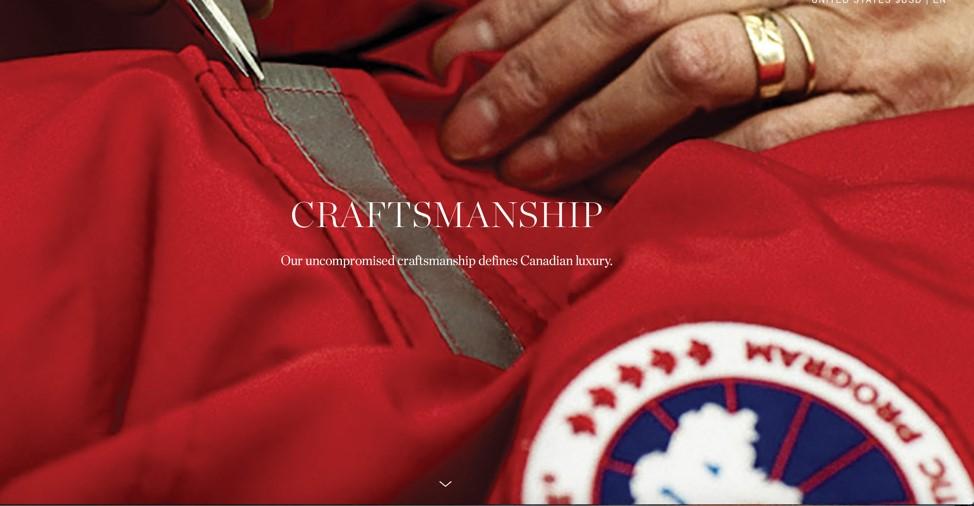

This article is part 2 in a 2 part series of iconic Canadian brands, where we examine the cultural branding and brand-building activities of Canadian brands that made them who they are.
In the previous article on Canadian brands, we have seen that there are several brands from Canada that have achieved Iconic status, such as the Hudson’s Bay Company, Lululemon, Cirque Du Soleil, and more. Let’s zoom in on the brand building actions that drove several Canadian brands to achieve success. When we do, we will see that some of what has made these brands take hold, grow, and stay relevant, echo back to broader Canadian values, like being down to earth, people-focused, and of course a spirit of adventure. With Canada turning 150 years old this month, it is an occasion to reflect on and celebrate those values, and see how they play out in the world of brands.
Lululemon took an influencer strategy from the beginning to promote its brand directly through brand ambassadors identified among their target audience, described by some as “holistic guerilla marketing”. The company identifies a couple dozen respected yoga teachers and fitness professionals in a city and provides them with free Lululemon gear. This firstly enables their clientele to come in contact with the brand in their native fitness setting and also gives amateur yogis an image to aspire to. Then, Lulumemon takes professional photos of influencers and displays them online and in-stores, including captions such as ‘Dana Cope, Owner of Chatswood Yoga’. This is free advertising for local trainers which in turn helps them grow their own businesses.

Lululemon Athletica also provides a unique in-store experience in which customers are connected with staff, called “educators”, to discuss their health and fitness plans and identify the most suitable merchandise to meet their needs.
In addition to signature products, Lululemon’s shopping bag is distinctive and coveted, a signifier of the lifestyle of its carrier – similar to the widely-held Starbucks cup would do. You see the bags being used and reused by yogis around town and the world over, to pack lunch or carry groceries, which further builds loyalty and awareness.

In crafting the in-store experience, Lululemon has stretched the function of their stores to encompass a convening space for the broader community around them. In particular, Lululemon’s retail stores transform into fitness hubs on weekends, providing free lessons to connect with the yoga and fitness communities and get people involved with the brand in the locale.

On the whole, Lululemon finds ways to integrate the brand into the daily lifestyles of their customers while cultivating local communities — brand building actions consistent with revered Canadian values. In this example and others, we see the brand being shaped by the local culture, while the culture is in turn shaped by the brand.

Even as demand has grown, Canada Goose maintains a “Made in Canada” commitment for its products, by both expanding their existing operations and acquiring additional manufacturing facilities in Canadian cities such as Winnipeg. Furthermore, the brand has held true to the concept of craftsmanship even in the face of growth and globalization. Both the Made in Canada and Craftsmanship elements are reinforced in brand communications and across touchpoints to anchor and build positive associations around these elements in the minds of consumers.
In 2007, to celebrate the company’s 50th Anniversary, Canada Goose published their first Goose People book. The book highlighted “50 people from around the globe who embody the company’s values and lifestyle and inspire others through epic adventures.” Some Goose People and their adventures include Paddy Doyle, who survived the Canadian Arctic after a forced landing on ice; Laurie Skreslet, the first Canadian to climb Mount Everest summit, Lance Mackey, an adventure dogsledder; Ray Zahab, an extreme adventure athlete; and more. The Goose People Book reinforces the brand image that Canada Goose equips exceptional people with high quality apparel, enabling them to achieve mighty feats. By leveraging the stories of Goose People, the brand also provides highly inspirational and engaging content for its audience.

The CSR initiatives of Canada Goose are also aligned with their brand values, including the preservation of polar bear habitats, and the establishment ofCanada Goose Resource Centres in the Canadian Arctic that provide free fabrics, buttons, zippers and other materials for Aboriginal (Inuit) sewers who hand-make jackets and clothing for their families and communities. Canada Goose’s commitment to be a part of the solution in the preservation of wildlife and commitment to Aboriginal cultures resonates with Canadian consumers, and potentially audiences from cultures with similar heritages and challenges.
Over the past 6 decades, Canada Goose jackets have become the (un)official apparel of film crews in cold climates across the world due to their functionality and warmth. Canada Goose jackets have been featured in films such as The Day After Tomorrow and National Treasure, and the company has also produced a Goose People documentary called Out There, in collaboration with an Oscar-winning Canadian Director Paul Haggis. Further reinforcing the brand’s commitment to film, Canada Goose is an official sponsor of a number of film festivals around the world, including Sundance, Tiff, and Busan, with the company focusing its support on rising talent and independent filmmakers.

The spirit of adventure is prevalent throughout Canada Goose’s products and communications. For example, the exclusive club to receive updates on new offerings and special initiatives is called “Canada Goose Basecamp”, connoting the camp from which mountaineering expeditions set out.
Similar to Lululemon, we see Canada Goose embodying Canadian values, be it weathering extreme conditions, capturing the adventure spirit, or valuing craftsmanship. The positioning of Canada Goose and its communication themes have allowed the brand to capture a niche audience with filmmakers and extreme adventurers, as well as a mass market aspirational appeal. Even with a distinctly Canadian foundation, the brand has realized success internationally as well.
It is sometimes hard for a non-Canadian to grasp just what makes Canadians so crazy about this coffee shop, but its popularity is unquestionable. The chain stays relevant to customers through engaging campaigns, optimizing its offering, and giving back to the community.
Tim Hortons’ digital donut competition allowed it to engage its customers while integrating its online and social media marketing efforts. The brand was featured on hit TV show How I Met Your Mother with a fictional food product: putting a TimBit (a bite size donut dough ball) inside of a strawberry vanilla donut. Tim Hortons capitalized on the idea and created a new themed “Priestley” donut, which added to the buzz. The brand also engages with celebrities, such as Deadmau5, a famous Toronto DJ, who requested a personal donut. Within a day, Tim Hortons tweeted back a photo of a dual-TimBit combination that mimics the DJ’s iconic mask.

Tim Hortons has promoted numerous signature products over the years, but one that has stood the test of time is the “Double Double”. Double-double is Tim Hortons shorthand for “two creams, two sugars” and has become so integrated into the Canadian vernacular that it is requested and understood at any coffee shop across the country. The company has teamed up with a Canadian bank CIBC to offer a Double Double Visa credit card. (Perhaps the term needs to be added to Canadian dictionaries too!)
When specialty coffee chains started gaining traction, Tim Hortons also began offering Lattes, Cappuccinos and Americanos, and have brought in a dark roast when it was requested by their customers.

In addition to upholding environmental and ethical standards in the coffee industry, Tim Hortons has several important community-based initiatives through the Tim Hortons Children’s Foundation, such as Tim Hortons Camps and TimBits Minor Sports Program. Not an afterthought or a side-line activity, these community programs are at the forefront of operations for each Tim Hortons location where consumers donate at the counter or drive through while waiting for their double-double. Tim Hortons has attempted to expand into the United States, but to date the concept has not hit the mark as much as it does on home turf.
When we analyze cases of successful Canadian brands, we are left with a couple of questions to ponder. Firstly, we see that Canadian brands often contain values that are consistent with Canadian values in general. Whether it is staying close to the consumer, integrating in the community, or capturing an adventurous spirit, it is these distinctive Canadian elements that have proven to be success drivers for these brands. Could it be that other international brands find success in leveraging the strengths of their native cultures? Leveraging national culture could give brands a distinctive edge in a foreign market, but it could also make them irrelevant against local competition or differing cultural preferences. Leveraging national/regional culture isn’t a surefire way for success, but it could be a good starting point.
Secondly, what is the magic formula that helps a Canadian brand succeed? While in these articles we have highlighted success stories, of course there are also failures. (We could write another chronicle on Canada-originated BlackBerry for instance.) While there is no single formula for success, it appears that Canadian brands, like brands the world over, need to have a strong core that is brought to life consistently, powerfully, and authentically over time. Continuous innovation is a must, and if they are expanding internationally, Canadian brands need to strike the balance between staying true to their roots yet being globally adaptive.
As an increasing number of Canadian brands embark on global adventures, their journeys will illuminate the principles of effective brand building. As Canada marks its 150th anniversary, it’s a time not only to celebrate the nation’s rich history but also to recognize that the country, in the grand scheme, is still in its youth, with the potential for even greater accomplishments in the future. Explore how brand building plays a pivotal role in projecting the essence of Canadian brands on the global stage, shaping their identity and influence. Dive into the strategies that contribute to the ongoing success of Canadian brands as they navigate the ever-evolving landscape of brand building.
A Labbrand Group Company © 2005-2024 Labbrand All rights reserved
沪ICP备17001253号-3* Will be used in accordance with our Privacy Policy
To improve your experience, we use cookies to provide social media features, offer you content that targets your particular interests, and analyse the performance of our advertising campaigns. By clicking on “Accept” you consent to all cookies. You also have the option to click “Reject” to limit the use of certain types of cookies. Please be aware that rejecting cookies may affect your website browsing experience and limit the use of some personalised features.